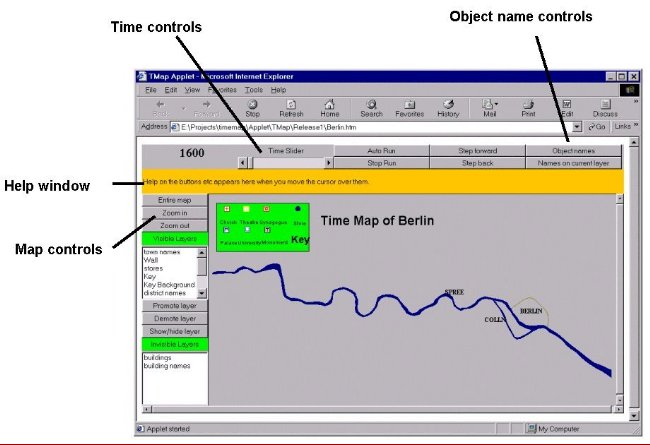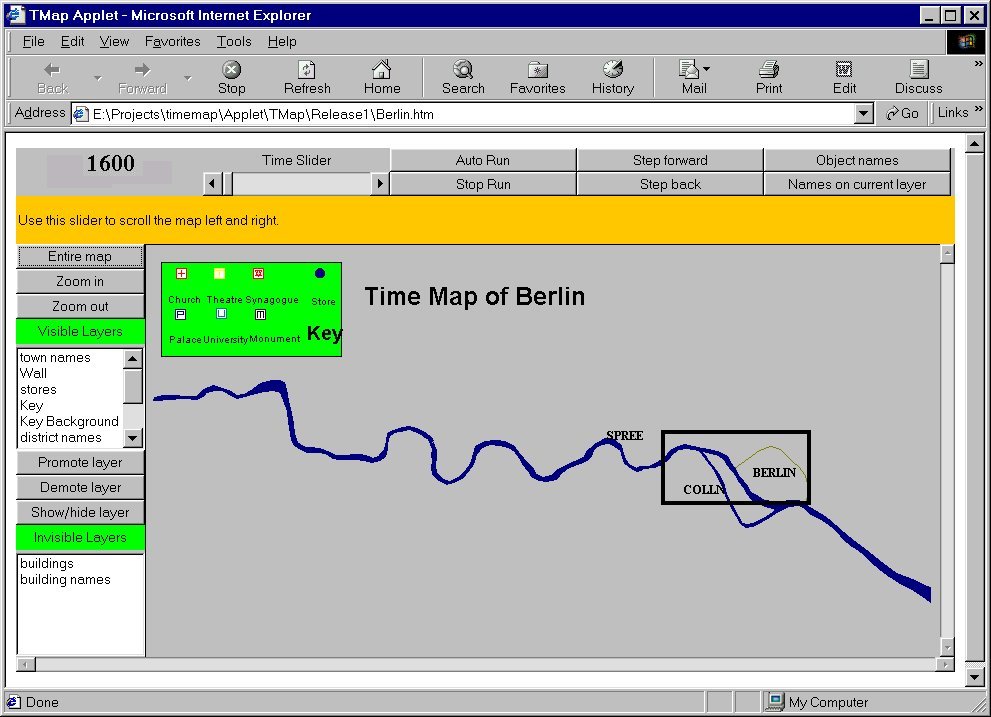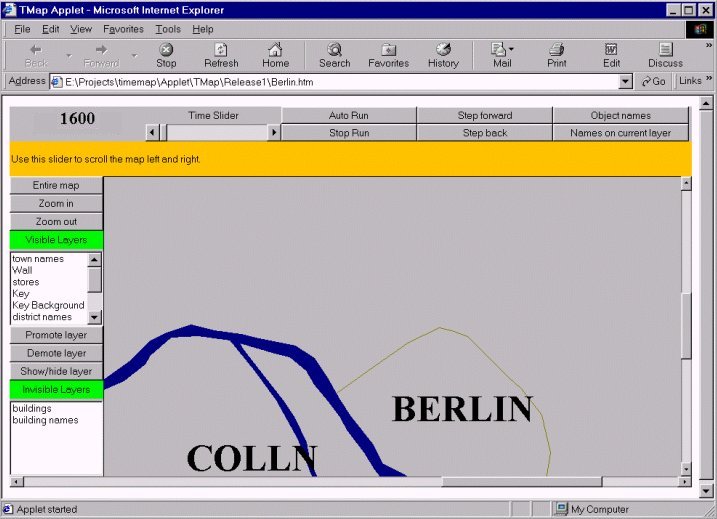Temporal Modelling
Home | About | Projects | Downloads | Education | Heritage | Publications | Gallery | Contact Us
Earlier projectsTime MapsTime maps are maps with the added dimension of time. The Liverpool Hope TMap time maps can be 'played' like a video or stepped through manually to illustrate particular teaching points. Liverpool Hope TMap time maps are created with an editor that we have developed which saves the map data in XML. Time maps can be viewed in a web browser using a Java applet written by the TMRG.
Explanation of how to use the TMap time mapsIntroductionTime maps are maps with the extra dimension of time. Such a map is able to shows its subject area changing over time. You can control the map's time through the Time controls. You can control the scale of the map - zooming in and out - and what objects are shown on the map using the Map controls. You can also select part of the map for closer examination. You can display the names of objects using the Object name controls. As you move the mouse over the controls, brief help notes about the controls appear in the Help window. As you move the mouse over the map, the current map co--ordinates of the cursor are displayed in the Help window. When you open a time map by opening a web page, you will see the map displayed in the main part of the window with the Time controls and Name controls along the top edge and the Map controls along the left hand edge.
Time controlsThese controls are used to set the date of the time map and to animate it through time.
Object name controlsThese controls are used to display or hide object names. The names of objects on a selected layer can be made visible or invisible by clicking on the Names on current layer button.
Help window
Map controls
Selecting a part of the mapSelect an area for magnification by:
The picture below shows the selection identified by a rectangle as the mouse is dragged down and rightwards.
The picture shows the result on releasing the mouse button.
You can restore the map to its original size by clicking on the Entire map button.
|
|



